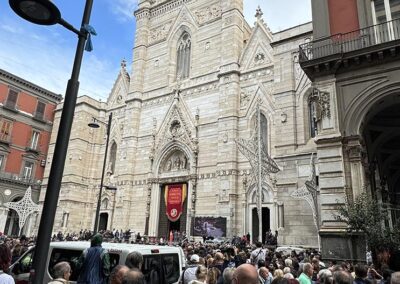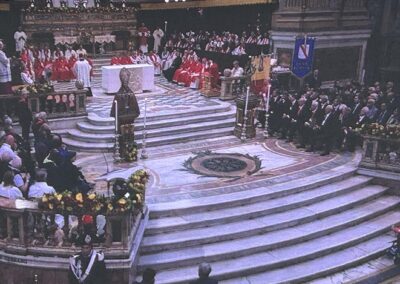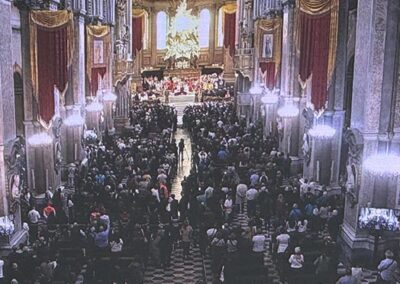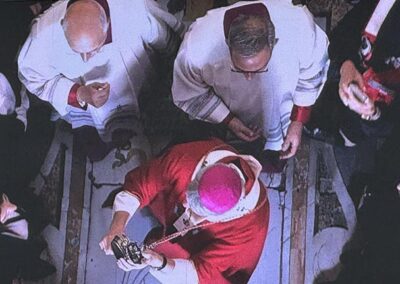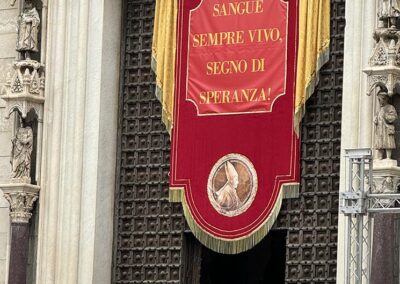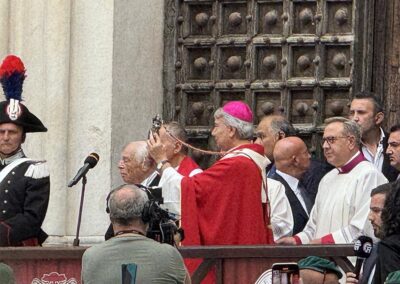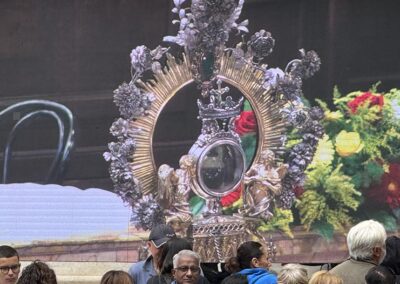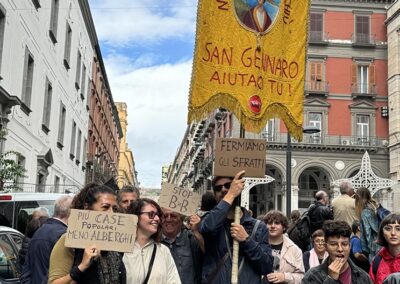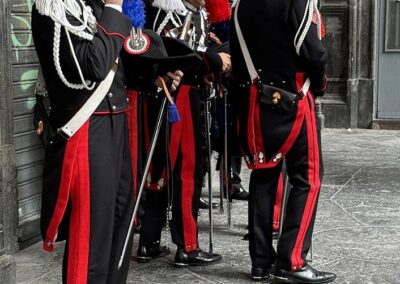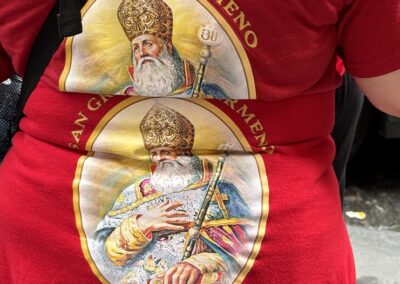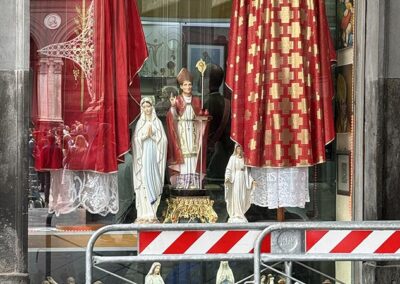It seemed that only cardinals, bishops, priests – and maybe a “deserving” few nuns – were allowed to enter the church. A large-screen monitor display was set up outside, so we could watch what was happening inside.
Essentially, San Gennaro was beheaded in the year 305, and they have an ampoule of his dried blood held in the reliquary. Almost every year, on his Feast Day, the blood turns to liquid again. When it does, the church bells ring and the Napolitani feel hopeful for their city. (The church bells did ring this year.)
I was across the street and zooming in to photograph the large display, thus the image quality.)
Here’s an overview from Italia.it:
“In Naples, the 19th of September is the Feast of San Gennaro. This very special day for Neapolitans is an explosion of popular devotion to the city’s patron saint and a fascinating synthesis of tradition and spirituality. The ampoule containing his blood is taken from the Reliquary and the miracle of liquefaction is repeated every year. Being in Naples on this occasion is a unique experience when you can take part in the full program of celebrations and the genuine, boundless enthusiasm of the Neapolitan people.
The cult of San Gennaro: between history and legend
“Gennaro lived in the second half of the 3rd century and became Bishop of Benevento. Gennaro was martyred in the wake of Diocletian’s persecutions when he refused to recant and was sentenced to death along with other exponents of the Catholic faith.
“According to historical reports, he was beheaded in Misenum on 19 September 305, and legends sprang up from the very beginning. One of these legends says that, although he was condemned to be mauled by beasts in the amphitheatre, the beasts bowed at his feet and became tame, so he was beheaded instead. According to another widespread belief, the stone where his blood fell, which is still preserved in Pozzuoli, turns red on the anniversary of his martyrdom.
”The cult of San Gennaro and his relics, shrouded in mysticism and sustained by deep faith, began well before his sanctification in 1586.”
Read more HERE.


